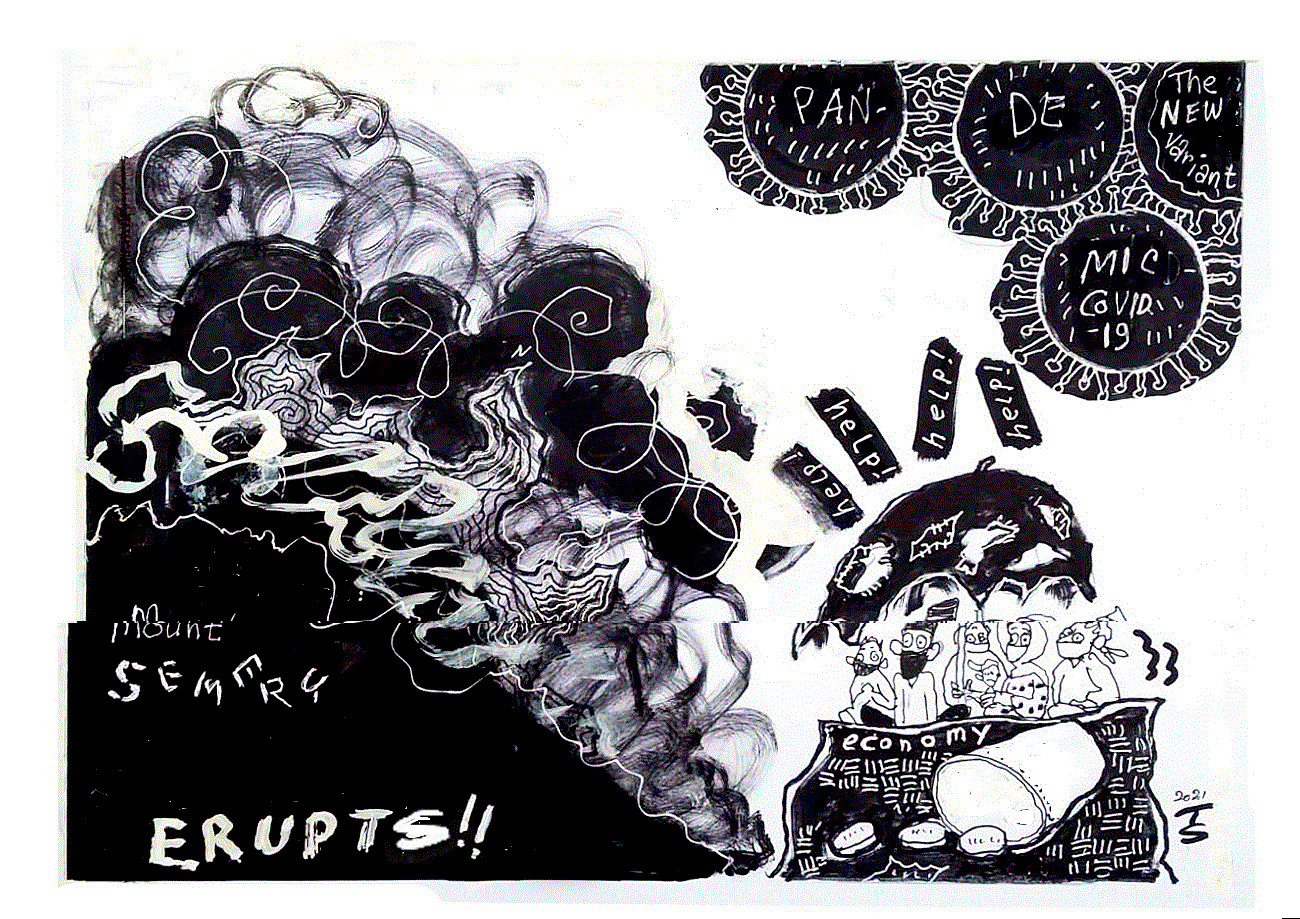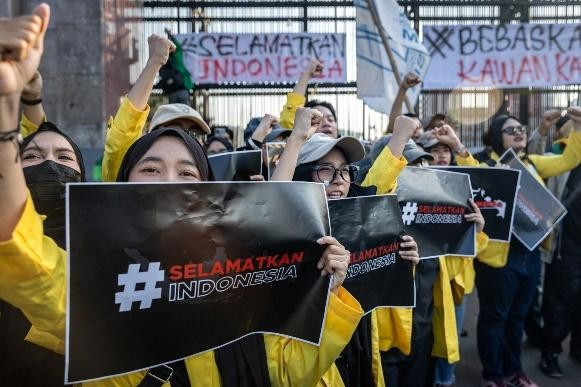Popular Reads
Top Results
Can't find what you're looking for?
View all search resultsPopular Reads
Top Results
Can't find what you're looking for?
View all search resultsMerciless Semeru
A new lesson from Semeru's eruption is that perhaps natural signs, such as volcanic quakes, do not necessarily precede an explosion.
Change text size
Gift Premium Articles
to Anyone
D
isasters know no mercy. At a time when we are still fighting the COVID-19 pandemic and taking every path to prevent a third wave with the looming arrival of the Omicron strain, on Saturday Mt. Semeru in East Java erupted, barely undetected, gushing volcanic ash that has killed at least 14 villagers, injured about 100 and displaced nearly 1,000 others.
As of Sunday, rescue workers have been trying to locate and rescue 10 people who were trapped in Curah hamlet in Kobokan village. The disaster has cut off access to the area hit hardest by the volcanic eruption, prompting the local administration to ask for a helicopter for the humanitarian effort.
Our prayers go out to those who fell victim to the disaster and rescuers who may have to risk their own lives for the safety of others.
The weekend’s eruption reminds us yet again that we live in a country that sits on the Pacific Ring of Fire, with numerous active volcanoes dotted across the archipelago. We were shocked by the major eruption of Mt. Merapi in Yogyakarta in 2010 that killed 353 people, including the volcano’s respected spiritual guardian Mbah Maridjan, mostly because of the toxic ash. In North Sumatra, Mt. Sinabung suddenly resumed activities in 2010 after decades of dormancy, with the biggest eruption in 2013 causing thousands to flee their villages for safety.
We should not forget either the eruption of Mt. Anak Krakatau in the Sunda Strait in December 2018 with its devastating impact. The tsunami resulting from the volcanic explosion killed no less than 400 people, many of them tourists gathering along the beach in Anyer, Banten.
Historical records beginning in 1818 show that before Saturday Semeru had erupted many times, but only since 1941 has volcanic activity been well documented. In May 2008, pyroclastic flows traveled 2.5 kilometers toward Kobokan village, but no fatalities or evacuations were reported.
Given the scale of Semeru’s latest eruption, President Joko “Jokowi” Widodo has instructed an immediate disaster response to ensure the safety of people affected. Those still missing must be found, the wounded receive appropriate medical treatment and the displaced be taken care of until they are allowed to return home.
The challenge for the local government and disaster mitigation agency is not only to protect the survivors who have to seek shelter, but also to prevent potential transmission of COVID-19. Although the government has gradually brought the pandemic under control, as evident in the infection rate that has significantly declined, there is no reason for complacency.
A new lesson from the Semeru eruption is that perhaps natural signs, such as volcanic quakes, do not necessarily precede an explosion. Head of the Geological Agency at the Energy and Mineral Resources Ministry, Eko Budi Lelono, said heavy rainfall might have sparked the eruption.
This was the case when Mt. Kilauea in Hawaii erupted in April 2018. A study conducted by Jamie I. Farquharson and Falk Amelung of the University of Miami released two years after the eruption confirmed the theory that heavy rainfall was a source of stress acting on Kilauea's internal structure.
We therefore should remain on alert. The study suggests that extreme rainfalls, which may happen more frequently because of climate change, could cause more volcanic eruptions in the country.











